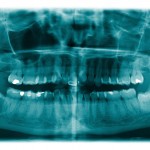
Extraction of lower third molars is a commonly performed procedure. Pain swelling and trismus are common post-operative complications and a number of studies have suggested that surgical suture technique may influence these complications.
The aim of this review was to assess the influence of two suture methods on the postoperative complications of lower third molar extraction.
Methods
The Medline/PubMed, Cochrane Library and Web of Science databases were searched for randomised controlled trials (RCTs) examining the effects of primary closure and secondary closure on pain, swelling and trismus. Outcomes at both early stage (2-3 days) and late stage (5-7 days) were considered. Two reviewers independently selected studies, extracted data and assess quality using the Cochrane tool. Meta-analyses were conducted using either weighted mean differences (WMD) or standardised mean difference (SMD) and 95% confidence intervals (CI)
Results
- 5 RCTs involving a total of 425 patients (518 extractions) were included.
- Meta-analyses suggest that patients having secondary closure had less pain and swelling at early and late stages.
| No. of studies | Std. Mean Difference
(95%CI) |
|
| Pain (2-3 days) | 4 | – 0.49 (- 0.71 to – 0.27) |
| Pain (5-7 days) | 4 | – 1.12 (- 1.57 to – 0.66) |
| Swelling (2-3 days) | 5 | – 0.36 (- 0.54 to – 0.19) |
| Swelling (5-7 days) | 5 | – 0.51 (- 0.68 to – 0.33) |
- Only 2 studies assessed trismus suggesting it was reduced with secondary closure.
Conclusions
The authors concluded: –
Our findings suggest that the use of secondary closure has a favourable effect on pain, facial swelling, and trismus in both early and late stages after the surgical removal of impacted mandibular third molars. However, the superiority of the technique still needs to be confirmed by more high-quality RCT.
Comments
This review compared primary closure of the socket with an airtight mucosal flap with secondary closure where a 5–6 mm wedge of mucosa distal to the second molar is removed and the flap repositioned using interrupted sutures to form a triangular opening distal to the second molar creating passive drainage. The authors searched 3 major databases restricting inclusion to RCTs. Only 5 RCTs were included and they were of limited quality lacking clarity on allocation concealment and blinding of participants in particular. Only a summary figure of the studies quality assessment was presented so it was not possible see the authors assessment of the individual studies.
An earlier review by Carrasco-Labra et al (Dental Elf – 25th Jun 2012) has also compared the impact of secondary versus primary closure techniques on third molar outcomes. They included 14 studies suggesting the differences between the two techniques were likely to be small however they highlighted low to very low confidence in the finds because of the limited quality of the available studies. In 2014 a Cochrane Oral Health Group review (Dental Elf – 4th Aug 2014) looked more broadly at surgical techniques for removal of lower third molars finding some evidence that secondary wound closure was associated with reduced pain at 24 hours and slightly reduced swelling after one week. However, there were concerns about the quality of the available evidence.
While these existing reviews suggest they may be some benefit from using a secondary closure technique we cannot be certain from the available data so well conducted and reported studies of appropriate size are needed to provide better evidence.
Links
Primary Paper
Ma S, Li X, Zhang A, Liu S, Zhao H, Zhao H. Efficacy of secondary closure technique after extraction of third molars: a meta-analysis. Br J Oral Maxillofac Surg. 2019 Sep 17. pii: S0266-4356(19)30347-X. doi: 10.1016/j.bjoms.2019.08.028. [Epub ahead of print] Review. PubMed PMID: 31540844.
Other references
Dental Elf – 20th Oct 2016
Dental Elf – 4th Aug 2014
Available evidence for various aspects of surgical removal of third molars is very low to moderate
Dental Elf – 25th Jun 2012

Pain swelling and trismus are common post-operative complications and a number of studies have suggested that surgical suture technique may influence these complications.It was then suggested that pain may accumulate for days..just seek advice to your dentist